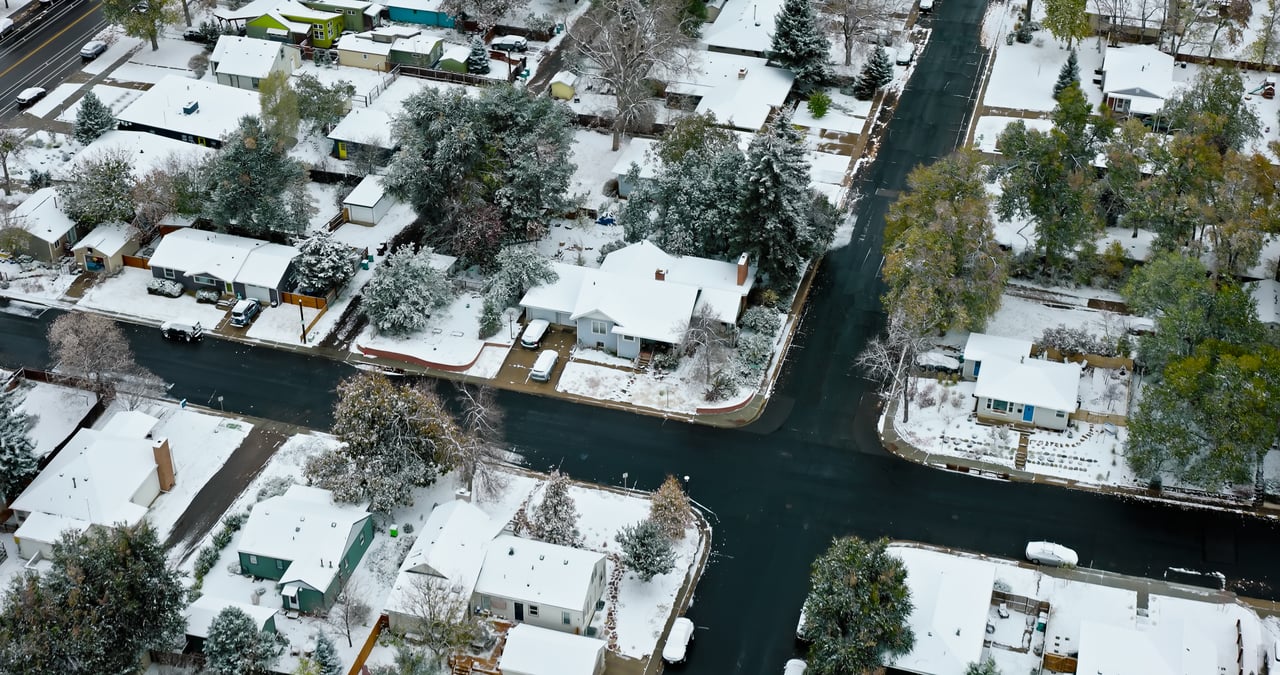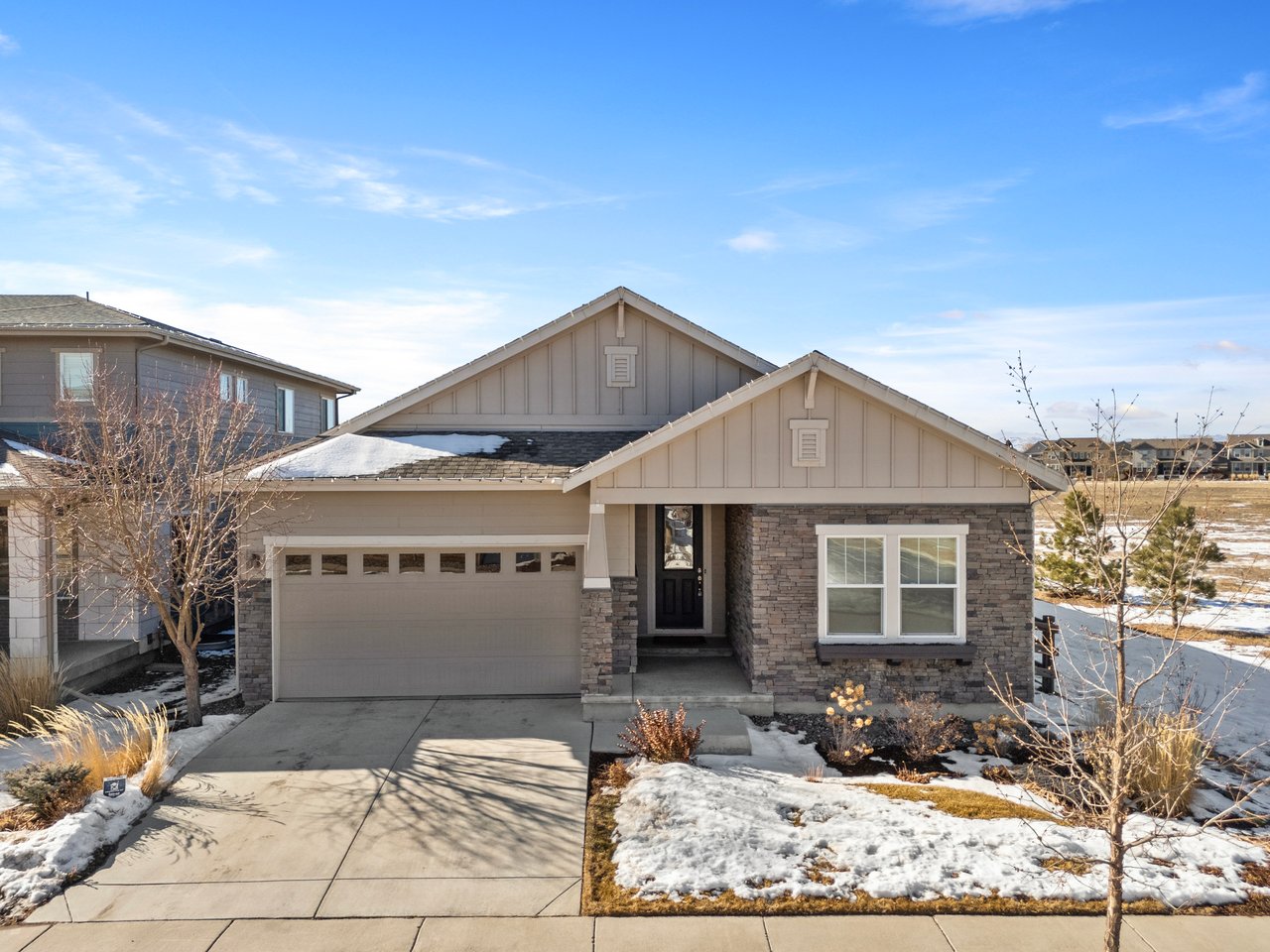January 2025 | Market Update
Market Update

Market Update

Here we are, one month into 2025 and the Northern Colorado and Front Range real estate market is kicking off with opportunity and high expectations. In the midst of unknown variables with international trade and interest rate stability, buyers seem to be moving into the field after a long period of doubt and hesitation. Here’s the latest on the market from January 2025 data. Home Inventory Increase: Across nearly every market including luxury, single family and attached homes, in all parts of the region, inventory has increased versus this time last year, giving buyers some choice and exciting opportunity. Standout markets include Denver Metro with a 49% increase in homes on the market, Loveland up 88% versus this time last year, and Longmont up 53%. Fort Collins showed a moderate increase at 8%. Sales Rate Ticks Up: Not surprising, with increased inventory levels and less timid buyers, sales rates are also largely up: Berthoud up 64%, Timnath up 64% and Longmont up 6%, indicating the rising inventory is being absorbed by buyers. Average Sales Prices Moderate: Coming off a year of lower appreciation rates, January 2025 showed more of the same with average sales prices more or less flat versus last year. A standout: Loveland Single Family homes are up 6% versus last year, Evergreen up 12%. And Estes Park condos and townhomes are up 6%. Boulder was down slightly, by 2%. Luxury Sales Increase, Record High Prices in January: Closed sales in the luxury segment increased in many markets: Berthoud up 500% with 6 luxury homes sold in January, Denver up 23% and Timnath up 300%. Some January record high sales prices also caught our attention: Denver had an off market sale of $15M for a 12,000 sqft home just south of Cherry Creek Berthoud saw a 7300 sqft home in TPC Heron Lakes close for $3,050,000. Buyer Activity Increases, Inventory Improves: The market overall in Northern Colorado and the Front Range is showing strong buyer demand, stronger than in the last 6 months. For sellers, this could present a good opportunity to make a move. Buyers should be prepared for increasing inventory levels, new homes that are ready for the market with updates and in good condition, and be ready to put their best foot forward to avoid missing out on a market we haven’t seen in the past several years.
As 2025 unfolds, Northern Colorado’s housing market continues to evolve, shaped by rising inventory, steady pricing, and shifting buyer activity. While inventory levels have surged dramatically, home prices have largely held firm, reflecting a market that is transitioning but remains fundamentally strong. This analysis dissects the key trends across five major categories: Homes for Sale, Sold Listings, Months of Inventory, Average Sales Price (Single-Family), and Average Sales Price (Attached/Condo).
These statistics do not account for sale concessions and/or down payment assistance. This representation is based in whole or in part on statistics from IRES. IRES does not guarantee and is not responsible for its accuracy. Content maintained by IRES may not reflect all real estate activity in the area.
Inventory levels have expanded across every major market in Northern Colorado, marking a significant shift toward a more balanced environment.
This inventory expansion is the largest in years and suggests that higher mortgage rates, shifting affordability, and increased new construction activity have combined to create a market where buyers have more choice than at any point in recent memory. The rise in available homes also signals a cooling from the extreme seller’s market of the past few years, though demand remains strong in prime locations.
These statistics do not account for sale concessions and/or down payment assistance. This representation is based in whole or in part on statistics from IRES. IRES does not guarantee and is not responsible for its accuracy. Content maintained by IRES may not reflect all real estate activity in the area.
While inventory surged, closed sales remained relatively stable, with some minor variations across markets.
The data suggests that buyers remain active but selective, taking advantage of increased inventory but moving cautiously amid shifting economic conditions.
These statistics do not account for sale concessions and/or down payment assistance. This representation is based in whole or in part on statistics from IRES. IRES does not guarantee and is not responsible for its accuracy. Content maintained by IRES may not reflect all real estate activity in the area.
Months of inventory—one of the most telling indicators of market conditions—has risen across every subregion, further confirming a shift toward a more neutral market.
While inventory is expanding, the market remains far from oversupplied—most regions still hover between 2-3 months of inventory, a level that historically indicates a balanced market rather than an outright buyer’s market. However, sellers should adjust expectations accordingly, as homes that once attracted multiple offers within days may now require more strategic pricing and marketing.
These statistics do not account for sale concessions and/or down payment assistance. This representation is based in whole or in part on statistics from IRES. IRES does not guarantee and is not responsible for its accuracy. Content maintained by IRES may not reflect all real estate activity in the area.
The attached home and condo market presents a more mixed outlook, with pricing trends diverging across regions.
Unlike the single-family market, which has proven resilient, the condo and attached home segment appears more vulnerable to shifts in affordability. With interest rates still elevated, buyers may be more cautious about purchasing condos, particularly in locations where pricing has already reached peak affordability thresholds.
These statistics do not account for sale concessions and/or down payment assistance. This representation is based in whole or in part on statistics from IRES. IRES does not guarantee and is not responsible for its accuracy. Content maintained by IRES may not reflect all real estate activity in the area.
Despite the significant jump in inventory, home prices have remained largely stable, with modest gains in most regions.
The lack of dramatic price drops suggests that Northern Colorado’s real estate market remains well-supported by fundamentals, even as buyers gain more negotiating leverage. Unlike the attached home segment (discussed below), single-family homes continue to see solid demand, with little indication of significant price erosion.
As the Northern Colorado residential real estate market navigates a dynamic start to 2025, several key trends emerge, reflecting broader economic conditions, buyer sentiment, and inventory fluctuations. While inventory levels are rising across nearly all markets, sales trends remain mixed, and pricing movements suggest a nuanced interplay of supply and demand. Below is a detailed breakdown of the five key market categories: Homes for Sale, Sold Listings, Months of Inventory, Average Sales Price (Single-Family), and Average Sales Price (Attached/Condo).
These statistics do not account for sale concessions and/or down payment assistance. This representation is based in whole or in part on statistics from IRES. IRES does not guarantee and is not responsible for its accuracy. Content maintained by IRES may not reflect all real estate activity in the area.
Across Northern Colorado, inventory levels have increased dramatically, with some markets experiencing year-over-year (YoY) jumps exceeding 50%. Loveland leads the pack with an 88% increase in available homes compared to January 2024, more than doubling its previous year's inventory. Estes Park follows with a 55% increase, while Longmont (+53%) and Windsor (+24%) show substantial growth as well.
This surge suggests a significant shift in market conditions, likely influenced by higher mortgage rates, a cooling in buyer urgency, and a normalization of supply chains for new construction. Boulder, traditionally a highly competitive market, saw a 36% increase in inventory, indicating potential opportunities for buyers who were previously priced out. Meanwhile, the Denver Metro area witnessed a 49% increase, adding over 2,000 additional homes to the market, a notable signal for broader regional trends.
Despite these changes, Timnath and Berthoud—two emerging luxury and high-growth communities—continue to see strong demand, with inventory increases of 18% and 27%, respectively. These markets remain attractive for new developments and buyers seeking modern amenities within proximity to the region’s economic hubs.
These statistics do not account for sale concessions and/or down payment assistance. This representation is based in whole or in part on statistics from IRES. IRES does not guarantee and is not responsible for its accuracy. Content maintained by IRES may not reflect all real estate activity in the area.
While inventory has increased, buyer activity presents a more complex narrative. Certain markets like Windsor (+70%), Berthoud (+64%), and Timnath (+64%) experienced significant jumps in transactions, reflecting continued demand for new homes and competitively priced properties. However, other markets saw a decline in sold listings, with Loveland (-18%) and Fort Collins (-2%) registering modest slowdowns.
This divergence underscores how localized economic conditions, price sensitivity, and inventory mix impact buyer activity. For instance, Estes Park saw no change in year-over-year sales despite a large jump in inventory, indicating potential buyer hesitancy at higher price points or a delay in absorbing the new supply. Conversely, Evergreen saw a 33% increase in sales transactions, an indication that mountain communities remain desirable despite a challenging lending environment.
A broader takeaway is that demand remains highly selective, with well-priced homes moving quickly while others linger due to shifting affordability dynamics. The increase in choice for buyers also means that sellers must be strategic in pricing to attract competitive offers.
These statistics do not account for sale concessions and/or down payment assistance. This representation is based in whole or in part on statistics from IRES. IRES does not guarantee and is not responsible for its accuracy. Content maintained by IRES may not reflect all real estate activity in the area.
Months of inventory—a key indicator of market balance—has increased across almost every market, signaling a shift from an extreme seller’s market toward a more balanced landscape.
Despite these shifts, markets remain tight compared to historical norms, especially in highly desirable locations like Evergreen (1.7 months), Fort Collins (1.7 months), and Boulder (3.1 months). Buyers still face competition, particularly in premium-priced and well-located properties, but sellers must recognize that the days of automatic bidding wars may be behind us.
These statistics do not account for sale concessions and/or down payment assistance. This representation is based in whole or in part on statistics from IRES. IRES does not guarantee and is not responsible for its accuracy. Content maintained by IRES may not reflect all real estate activity in the area.
Unlike the inventory surge and fluctuating sales activity, home prices have remained remarkably resilient.
Overall, the relative stability in pricing suggests that despite economic headwinds, strong underlying demand, limited long-term supply, and the desirability of Northern Colorado’s communities continue to support valuations. However, as inventory builds, pricing power may begin to favor buyers in select segments.
These statistics do not account for sale concessions and/or down payment assistance. This representation is based in whole or in part on statistics from IRES. IRES does not guarantee and is not responsible for its accuracy. Content maintained by IRES may not reflect all real estate activity in the area.
The attached home and condo market tells a more fragmented story, with several communities seeing notable price declines, while others remained stable or posted modest gains.
Unlike the single-family home market, which remains buoyant, the attached market shows more vulnerability to shifts in affordability and financing constraints. Developers and sellers in this segment may need to adjust expectations as rising mortgage rates dampen buyer appetite for condos and townhomes
Stay up to date on the latest real estate trends.

Home By Design
A PALM-FILLED ISLAND DREAM IN THE FLORIDA KEYS

Market Update

Home By Design
Delicious Plant Based Meals This Season

Home By Design
A GUIDE TO TOP FLORAL DESTINATIONS FOR SPRING

Market Update

Fort Collins, Colorado
Discover Luxury Living

Home By Design
An Elevated, Modern Aesthetic That’s Sure to Please

Home By Design
FOODS THAT BENEFIT YOUR OVERALL HEALTH

Home By Design
A Kitchen & Dining Room Nestled Between the Mountains & Ocean
We enjoy being able to provide the level of expert detail and understanding to our clients that we would expect as a client if we were working through the same process. Whether it be going through the home buying process or listing your home, we look forward to working with you soon!